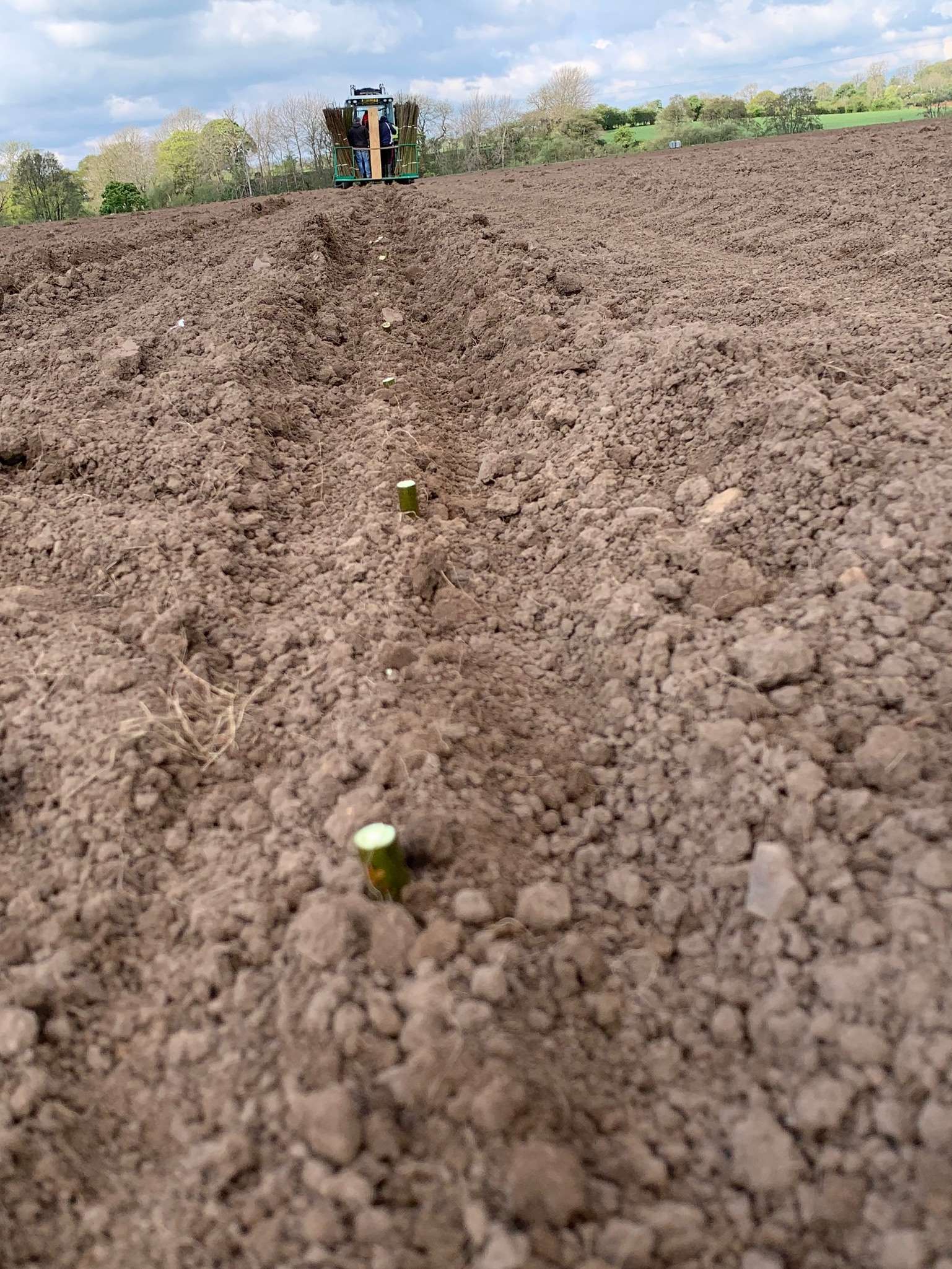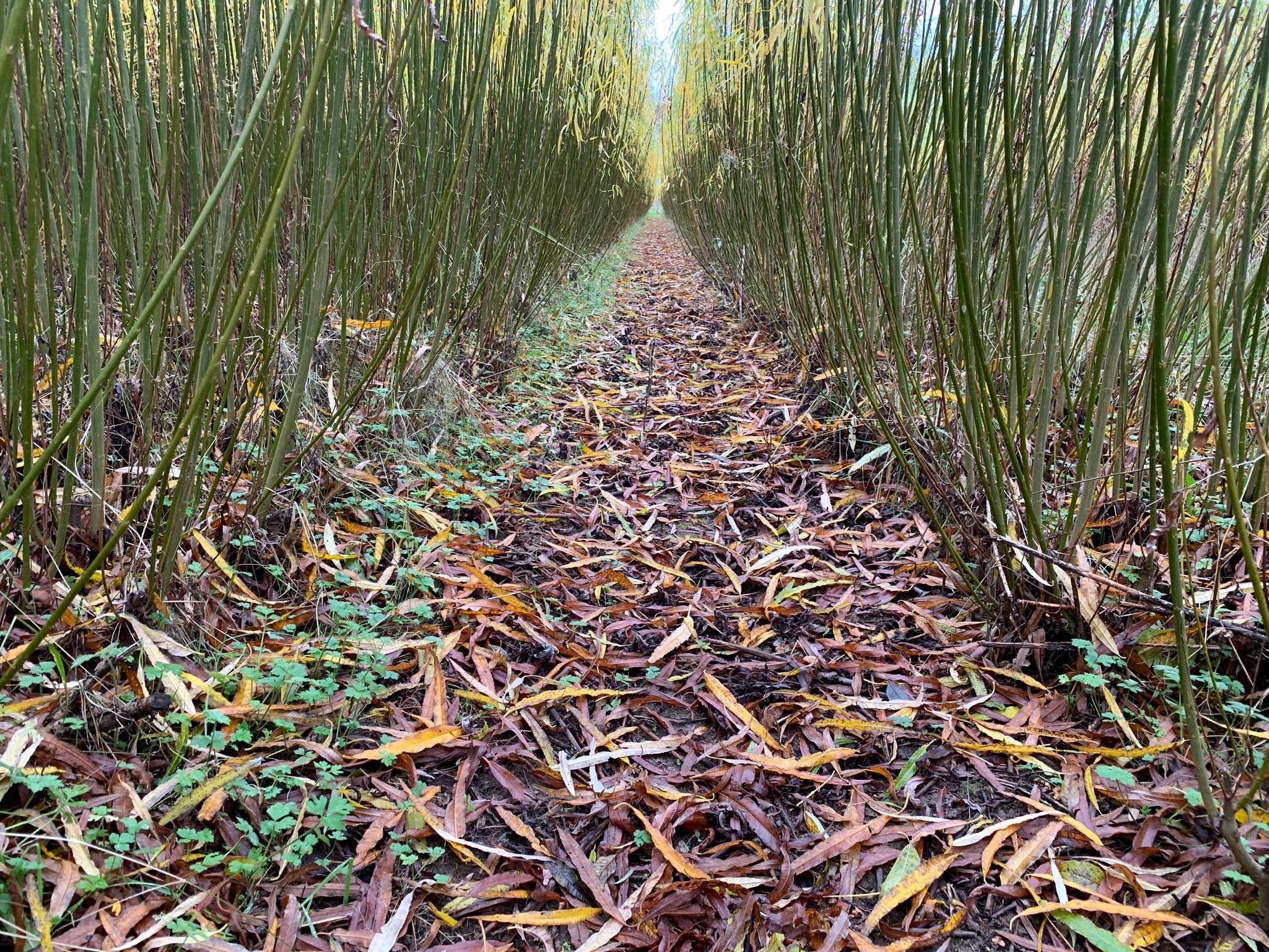Growing Willow For Biomass:Crop Management And Support
Helping landowners to grow large yield SRC willow crops quickly
Once you have prepared your land for growing willow and have planted the shrubs, minimal ongoing management is required until the plants are ready to harvest.
However, willow growers do need to be aware of the maintenance that is required. Taking willow cuttings at the appropriate time, for example, can ensure a bushier growth and therefore a higher yield.
From the planting of willow cuttings in the ground in early spring through the first growing season, is the most critical time. Then, at the end of that first season, the growing shrubs are cut back to short willow stools that are only 10cm above ground level. This is another vulnerable phase where regular management is needed.
Coppicing willow trees and shrub varieties encourages them to sprout multiple new stems in the following spring. This spurs rapid growth, in competition with lots of neighbouring stems, which encourages the growth of long straight rods, ideal for processing into wood chip.
Like any crop, too, there are certain threats to be aware of. Avoiding damage from wildlife, weeds and disease is vital to ensure the survival and quality of your willow.
Threats to your willow plantation
Once you’ve planted a coppice of willow, no matter how large or small, you want to ensure that your investment is protected. While willow is a hardy plant that will survive a variety of challenges in a number of environments, expert management is required to get the best return on your investment.
Effective management of your willow plantation will help protect from a number of threats.
Weeds and grass
Weeds are a big hazard to willow, particularly when it is establishing and growing in the first year. They compete for everything your shrubs need to survive, including water, light and soil nutrients. Too many weeds are likely to strangle the willow or otherwise cause your crop to fail.
When preparing for your willow plantation, the ground should be cleared of weeds and grass as thoroughly as possible. Willow energy have specialist equipment to help growers manage weeds and grasses in their crop. These are available to hire. As a minimum, this kind of maintenance needs to take place frequently during the first few years.
By keeping an area clear of anything vying for the willow’s resources, you give your plantation a much better chance of healthy growth.

Wildlife
While willow plantations are an excellent habitat for wildlife, some care needs to be taken that certain animals don’t damage and destroy your shrubs. When young, especially, willow whips are unable to withstand the heavy gnawing and chewing that hares, rabbits and deer enjoy so much. More established willow plantations can also be affected by snacking animals, so it’s important to take preventative measures right from the start.
Drought
If you want to see the best possible growth, appropriate willow growing conditions need to be met. The young plants are very thirsty. So, maintenance of your plantation involves ensuring they don’t dry out, at least until their roots are well established and can intake water from deeper in the soil.
This reliance on water is one of the reasons that willow should be planted away from buildings. Willow roots will hunt out a good source of water. If this is something you are concerned about, we can offer advice about whether a willow coppice is suitable for your land.


Disease and pests
Willow is fortunately not often affected by disease and pests. However, routine maintenance should include examination for any potential problems. The sooner any issues are spotted, the sooner and more easily they can be eradicated. Regular inspections will help you avoid any far-reaching damage.
Willow Maintenance Services
While willow is a fast-growing, low-maintenance crop when compared to its more traditional counterparts, ongoing management is necessary to ensure health and vitality. Through our willow maintenance services, you can benefit from our expertise, experience, and specially designed equipment. Combine it with any of our other willow services, or bring us on board to look after a crop that has already been planted.
Get in touch to learn more about how our willow crop management services can ensure that you get the healthiest, strongest, and most lucrative growth, resulting in a better return on investment.

